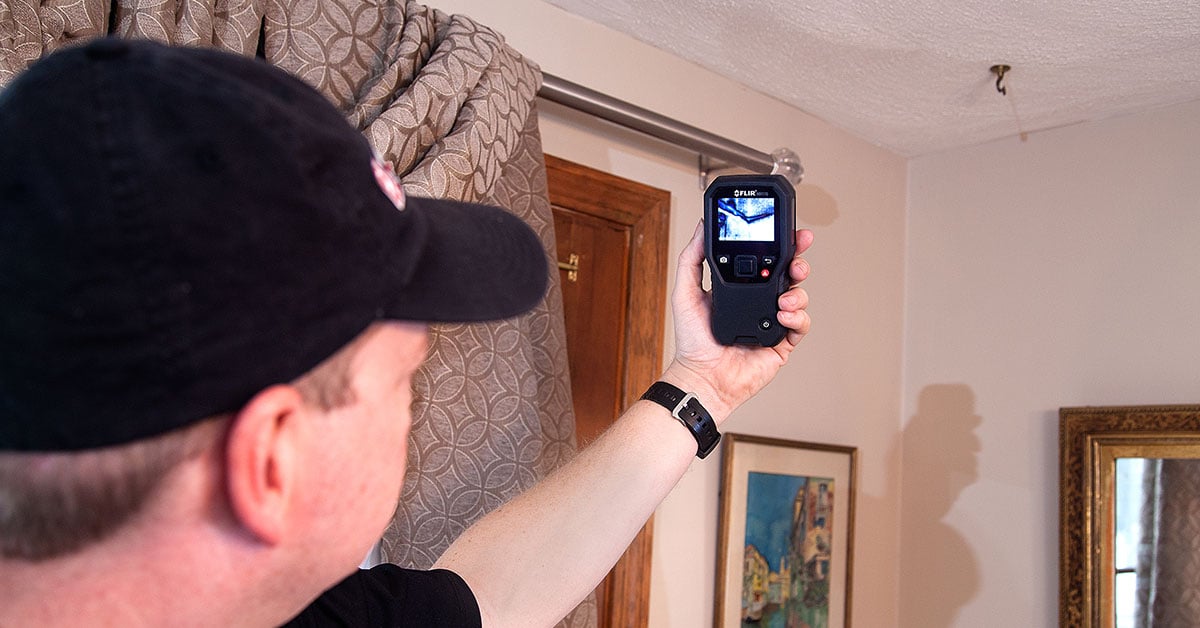Discover Reliable Water Leak Detection Services for Accurate and Fast Outcomes
Discover Reliable Water Leak Detection Services for Accurate and Fast Outcomes
Blog Article
Cutting-edge Solutions for Early Discovery of Water Leaks in Buildings and Facilities
As the stability of buildings and framework is critical, the obstacle of very early discovery of water leakages has spurred ingenious remedies that promise to transform the means we secure against prospective problems. From sophisticated leakage discovery innovations to the deployment of IoT sensors for real-time tracking, the landscape of leak avoidance is evolving rapidly. Machine understanding algorithms use a glance right into the future of leakage forecast, while thermal imaging provides a non-intrusive method for identifying hidden leakages. Automated water flow analysis systems are improving how leakages are recognized and resolved, leading the way for a positive method to water leakage discovery. Each of these solutions holds the essential to ensuring the integrity and longevity of our developed environment, prompting a change in the direction of an extra sustainable and reliable future.
Advanced Leak Discovery Technologies
Advanced leakage discovery technologies, equipped with innovative sensors and formulas, play a vital duty in promptly determining and identifying water leaks in various setups. Electro-magnetic sensors can determine modifications in electromagnetic fields triggered by water, supplying yet an additional layer of leak detection ability.

IoT Sensors for Real-Time Tracking
In the world of contemporary water leakage discovery, the combination of IoT sensing units for real-time tracking stands for an essential improvement in improving positive leak detection abilities. These sensing units supply constant tracking of water systems, offering real-time data on water circulation rates, pressure variants, and temperature level modifications. By leveraging IoT technology, these sensing units can detect also the smallest abnormalities in water usage patterns, allowing early recognition of possible leakages prior to they escalate into major concerns.
IoT sensing units send data to a central platform, where sophisticated formulas examine the information and generate informs or alerts when irregularities are discovered. This real-time tracking capacity permits building proprietors or facility supervisors to promptly deal with leakages, minimizing water damage, decreasing fixing prices, and conserving water resources.
Additionally, IoT sensors can be integrated with structure administration systems, allowing for computerized reactions to found leaks, such as shutting off water shutoffs or activating pumps to mitigate the impact of leakages. Overall, the application of IoT sensing units for real-time monitoring considerably boosts the performance and performance of water leak discovery in structures and infrastructure.
Artificial Intelligence Algorithms for Leakage Prediction

One key advantage of using maker learning for view it now leak prediction is its ability to continually learn and boost its accuracy over time. As more data is collected and fed right into the formula, it can fine-tune its predictions and adapt to transforming conditions, eventually increasing the reliability of leak discovery systems.
Furthermore, device understanding algorithms can aid in recognizing refined signs of leaks that might go undetected by typical tracking approaches. water leak detection. By analyzing intricate data embed in real-time, these algorithms can supply very early cautions and notifies, permitting punctual intervention and preventive maintenance to minimize potential water damage and associated expenses
Utilizing Thermal Imaging for Leak Discovery
Thermal imaging modern technology supplies an encouraging technique for identifying water leakages in various systems and frameworks. By Click Here utilizing infrared radiation and temperature differences, thermal imaging cams can determine concealed leakages that are not quickly noticeable to the nude eye.
One of the essential advantages of thermal imaging for leak detection is its non-intrusive nature. Overall, the use of thermal imaging innovation improves the efficiency and precision of water leakage detection, making it a valuable tool for maintaining the stability of structures and facilities.
Automated Water Flow Evaluation Equipments
Exactly how can automated water flow evaluation systems transform the detection and management of leaks in numerous systems and facilities? Automated water circulation analysis systems use a proactive method to leak detection by continually checking water circulation prices and patterns. By establishing baseline data, these systems can promptly recognize discrepancies that might suggest a leakage, enabling timely treatment to avoid comprehensive damages.
These systems utilize advanced algorithms to examine real-time information and provide immediate informs when abnormalities are detected, permitting swift activity to be taken. Furthermore, automated water flow analysis systems can be integrated with building administration systems or IoT systems, boosting overall performance and allowing remote monitoring capacities.
Moreover, the data collected by these systems can be used for anticipating upkeep purposes, assisting to determine possible powerlessness in the framework before leaks occur. On the whole, the implementation of automatic water circulation evaluation systems can dramatically enhance leak detection and management methods, eventually bring about cost financial savings, decreased water wastefulness, and boosted sustainability in buildings and facilities.

Final Thought
Finally, the integration of innovative leakage detection technologies, IoT sensors, device discovering algorithms, thermal imaging, and automated water circulation analysis next page systems provides ingenious options for early detection of water leaks in structures and facilities. These innovations make it possible for real-time tracking, forecast of leakages, and efficient discovery approaches to stop water damages and wastefulness. Implementing these options can assist in preserving the stability and sustainability of water supply in different setups.
Report this page